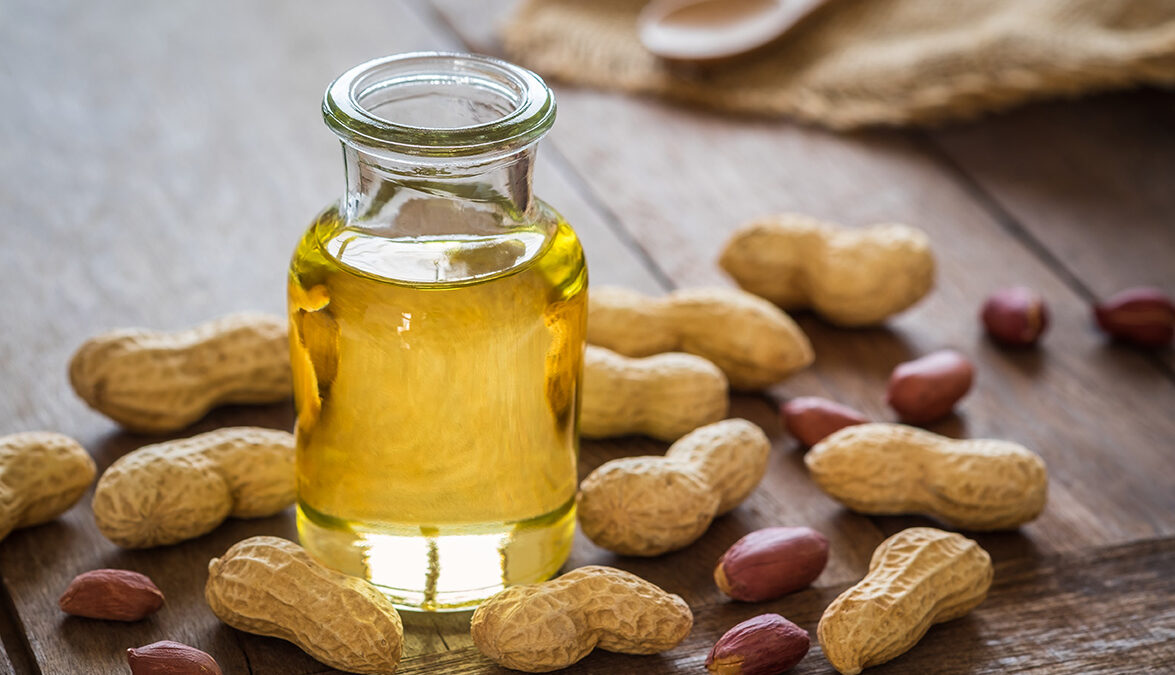In search of a healthier lifestyle, we are becoming more and more conscious of what we consume. In our quest for better alternatives, there’s a growing interest in making things from scratch. This not only guarantees a genuine product but also forms stronger bonds with what we consume and use on our skin.
One such gem is peanut oil – a versatile, healthy choice for both cooking and skincare.
Made from groundnuts, peanut oil boasts a wealth of nutrients including protein, fat, vitamins, and minerals. It’s like a natural elixir, with Vitamin E to keep your skin looking youthful and fresh.
Whether you’re frying, sautéing, or grilling, peanut oil is a kitchen essential for many of us. It not only adds flavor but provides multiferous health benefits to our bodies.
But have you wondered how peanut oil is made?
Well, wonder no more! In this blog, we will tell you exactly that! Let’s start right away.
| Table of Contents Refined Peanut Oil v/s Cold Pressed Peanut Oil: What’s The Difference Health Benefits Of Cooking With Peanut Oil Make Your Own Peanut Oil At Home FAQs: How To Make Organic Peanut Oil: The Ultimate Guide Conclusion |
Refined Peanut Oil v/s Cold Pressed Peanut Oil: What’s The Difference
Before discussing the benefits of Peanut Oil and how it is made, we must take into account the two major types: Refined Peanut Oil and Cold Pressed Peanut Oil.
We’re all familiar with these two categories. But what precisely are they, and how do the benefits vary between the pair? Let’s find out.
Refined Peanut Oil
- Obtained through extraction at high temperatures, reaching up to 200 degrees Celsius, using machinery in factories.
- Undergoes various processing steps, including the addition of chemical additives, to refine, bleach, and add aroma.
- Consequently, loses most of its nutrients, flavors, and aroma.
- Moreover, the intensive processing can introduce trans fats into the oil, which are detrimental to health.
- Obtained by applying mechanical pressure to groundnuts at temperatures below 60 degrees Celsius.
- This approach aids in retaining the natural aroma, flavors, and nutrients of the oil.
Now let’s discuss the benefits of cooking with peanut oil.
Health Benefits Of Cooking With Peanut Oil
Did You Know?
When oils are subjected to heat, most of them transform into trans fats. However, Peanut oil stands out with its relatively high smoke point of 437°F or 225°C. This characteristic enables it to preserve vitamins, minerals, and other beneficial nutrients. Consequently, it is regarded as one of the best cooking oils.
Incorporating peanut oil into your daily diet really makes a huge difference. Let’s see how.
- Improves Heart Health
Peanut oil in cooking improves health and reduces the chances of heart-related issues to a great extent. Peanut oil is free from cholesterol. Its unsaturated fat contributes to lowering the LDL cholesterol levels and increases HDL cholesterol, thereby enhancing heart health. Peanut oil is therefore a heart-smart choice.
- Antioxidant Properties
Cold-pressed groundnut oil contains abundant phytosterols and Vitamin E, functioning as antioxidants that remove oxidative stress within the body.
- Controls Diabetes
The unsaturated fats it contains might enhance insulin sensitivity in the body. Furthermore, the presence of Oleic Acid in peanut oil may stimulate insulin production and aid in managing type 2 diabetes.
- Skin and Hair Health
Peanut oil offers numerous advantages for skin and hair. It aids in moisturizing and diminishes signs of aging. It may also help with treating scalp-related issues like psoriasis. Massaging the skin topically with peanut oil enhances blood circulation throughout the body, thereby improving skin health.
We know that you are curious to know everything about the peanut oil-making process. So let’s dive right in.
Make Your Own Peanut Oil At Home
Making groundnut oil at home is a simple procedure, and we will provide a detailed, step-by-step guide on how to do so.
What You Will Require:
- 2 cups raw peanuts
- Water
- Blender
- Clean cloth or cheesecloth
- Strainer
- Bowl
- A pot or a frying pan
- A bottle to store the oil
What You Need To do:
- Clean the peanuts
The initial step in the homemade peanut oil-making process involves cleaning the peanuts.
- Begin by removing any dirt or debris from the peanuts.
- Subsequently, rinse them under flowing water to ensure the removal of any remaining dirt or debris.
- Soaking the peanuts in water for approximately 30 minutes can facilitate the cleaning process.
- Dry the peanuts
- Following the cleaning process, thoroughly dry the peanuts.
- You can use a clean towel or paper towel to pat them dry.
- Make sure that they are completely dried before proceeding to the next step.
- Roast the peanuts
Roasting the peanuts is a crucial stage in homemade peanut oil preparation.
- Heat a frying pan or pot over medium heat.
- Add the peanuts and roast them for around 10-15 minutes, stirring occasionally to ensure uniform roasting.
- Once the peanuts attain a golden brown color, remove them from the heat and allow them to cool.
- Grind the peanuts
- Once the peanuts have cooled down, place them in a blender.
- Grind the peanuts and ensure a fine powder.
- Alternatively, you can grind the peanuts manually using a mortar and pestle.
- Add water
- Place the groundnuts in a bowl and pour water over them.
- Thoroughly mix the ingredients to ensure an even distribution of water among the groundnuts.
- Let the mixture sit for approximately 30 minutes.
- Filter the mixture
At this point, you may ask “How is peanut oil extracted?” This is how.
Peanut oil extraction is not as complicated as it sounds.
- After you have let the mixture sit for 30 minutes, strain it through a clean cloth or cheesecloth to separate the oil from the groundnut paste.
- Press the cloth firmly to extract all the oil.
- Boil the oil
- Transfer the extracted oil to a pot or frying pan and heat it over medium heat.
- Allow the oil to boil for roughly 5 minutes to eliminate any remaining water and sterilize the oil.
- Store the oil
- Once the oil has boiled, remove it from the heat and let it cool.
- Transfer the oil to a clean, dry glass bottle and store it in a cool, dark place.
The oil can be used for cooking or other purposes hereafter.
By following the above steps, you can easily create fresh and nutritious groundnut oil that is free of preservatives and other potentially harmful chemicals.
FAQs: How To Make Organic Peanut Oil: The Ultimate Guide
Is cold-pressed groundnut oil good for health?
Certainly, the unique preparation technique of cold-pressed oil preserves its nutritional value without any adverse effects, rendering it a favored choice for cooking and your health.
Who should not consume groundnut oil?
Those with groundnut allergies should avoid consuming groundnut oil. It is important to consult a doctor before incorporating it into your diet.
How to properly store peanut oil?
Similar to other oils, peanut oil should be stored in a cool, dark place. When unopened, it can maintain its quality for up to two years; however, once opened, it is best to use it within six months.
Additionally, you can refrigerate and store used peanut oil after frying by covering it securely.
Conclusion
Groundnuts offer numerous nutrients that are advantageous for both cooking and overall health. However, despite the numerous benefits of groundnut oil, it’s advisable to consume it in moderation. Like any other cooking oil, groundnut oil is calorie-dense and can add to your total calorie intake.
Give homemade groundnut oil a try today and reap the benefits of this wholesome cooking option.
Making organic peanut oil at home is easy, but commercially, Two Brothers Organic Farm offers top-quality wood-pressed groundnut oil, using ‘Ghungroo’ peanuts and a unique filtration process to preserve maximum nutrients.
Start today and savor the goodness of this nutritious cooking oil!
Related posts
Archives
- April 2024
- March 2024
- January 2024
- November 2023
- September 2023
- June 2023
- May 2023
- April 2023
- March 2023
- December 2022
- October 2022
- September 2022
- August 2022
- July 2022
- June 2022
- May 2022
- March 2022
- February 2022
- January 2022
- December 2021
- November 2021
- October 2021
- September 2021
- August 2021
- July 2021
- June 2021
- May 2021
- April 2021
- March 2021
Recent Posts
Uncorking Culinary Creativity: Cooking with Natural Wines
The best natural wines brand, celebrated for their authenticity, terroir-driven flavours, and minimal intervention, have long captivated wine enthusiasts around the globe. But beyond the glass, these vibrant libations also offer a world of culinary possibilities, infusing dishes with depth, complexity, and a touch of…
Understanding Labels on Wine Bottles
Getting to know the labels adorning wine bottles is like reading the blurb of a novel before diving into its pages in the world of wine. Each bottle holds a story that must be unraveled. A wine bottle label often acts as a window into…



